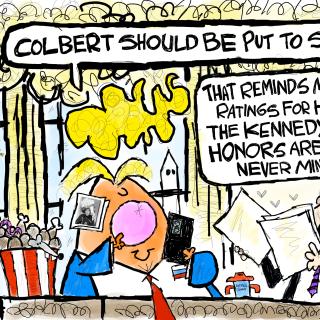Going to Shadowbox Live can be a humbling experience. The troupe’s so-called “metaperformers” are so busy, ambitious and talented that you can’t help feeling like a lesser species in their presence.
For a prime example of what they’re capable of, see Broken Whispers, an adaptation of F. Scott Fitzgerald’s The Great Gatsby that transforms the title character into a lesbian and tells her story through a combination of narration, dance and song. Radically changing a literary classic sounds like a dangerous endeavor, but the production is put together with such skill and ingenuity that it’s a wonder to behold.
And that’s just one of the shows currently being staged at Shadowbox. When you consider that the average troupe member juggles multiple productions with behind-the-scenes duties and even waiting tables, it’s hard not to conclude we’re dealing with a higher order of being here.
Fortunately for our egos, every once in a while the Shadowboxers put on a show that proves they’re only human after all. Such an animal is Shadow Zone, the troupe’s annual Halloween-season production.
The show takes its theme from The Twilight Zone, the Rod Serling anthology series that first hit TV airwaves in 1959. Maybe that’s one of the problems. You’d think a troupe with such a youthful vibe could come up with a source of inspiration that isn’t nearly 60 years old.
But the real problem is not the dustiness of the subject—it’s the weakness of the material based on the subject. Robbie Nance does a competent impersonation of Serling, who introduces many of the skits just as he introduced episodes of The Twilight Zone, but most of them struggle to earn a stray chuckle.
One of the biggest disappointments is Nightmare at 20,000 Feet, based on the episode I still recall as one of the scariest experiences of my impressionable youth. In the original, an airline passenger (a pre-Star Trek William Shatner) was terrified to discover that a monster only he could see was trying to sabotage the flight. In the skit, Shatner himself (an appropriately over-emoting Jimmy Mak) is terrified to learn he’s stuck on a flight with a gushing Trekkie. The weak premise yields few jokes.
Not much funnier is iPhone Alone, based on a Twilight Zone episode about a man who was thrilled to realize he was the sole survivor of a nuclear attack because it meant he could finally concentrate on his only true love: books. The twist was that he then broke his reading glasses. In the skit, the inveterate reader is replaced by an inveterate iPhone user (Mak). Its only true laughs come at the end, when Serling reappears to lob well-earned brickbats at Apple for making its popular product so annoyingly fragile.
Nance’s Serling also appears in Basic White Girl and Technically Speaking, two skits that rely on generational stereotypes. When you watch them, try not to imagine what the real Serling, an envelope-pushing intellectual, would have thought of such tired clichés.
Shadowbox breaks away from the Twilight Zone theme for the remaining skits, including a couple inspired by the horror film Rosemary’s Baby. The second of these is the most elaborate, imagining Satan (Nance) as a harried boss who struggles to keep hell running smoothly in spite of incompetent underlings. The sketch does get a few laughs, but they’re separated by frequent stretches of silence.
More entertaining is Shining: The Musical, one of Shadowbox’s frequent portrayals of grade-school theatrical productions. Teacher Mr. Hothos (Tom Cardinal) introduces his young students’ take on The Shining, complete with a Jack Nicholson impersonator (Mak) and tunes borrowed from Annie and Carousel. Again, not a lot of laughs, but it’s cute enough to get by.
All this may make Shadow Zone sound like a heavy slog, but don’t forget that the skits are separated, as always, by masterfully rendered cover songs. The highlights (and lead vocalists) include “Trip to Darkness” (Cardinal and Leah Haviland), “Funhouse” (Haviland), “Love Me Dead” (Amy Lay) and “Megalomaniac” (Brandon Anderson). My absolute favorite: Hozier’s “Take Me to Church,” with vocals by Stev Guyer, Jordan Ford, Haviland, Julie Klein and an ever-growing cast of backup singers.
With musical interludes like these, even a lesser Shadowbox show like Shadow Zone can be a reasonably pleasant way to spend an evening.
Shadow Zone continues through Nov. 12 at Shadowbox Live, 503 S. Front St., Columbus. Show times are 7:30 and 10:30 p.m. Friday-Saturday. Running time: 1 hour, 50 minutes (including intermission). Tickets are $20-$40. 614-416-7625 or shadowboxlive.org.



